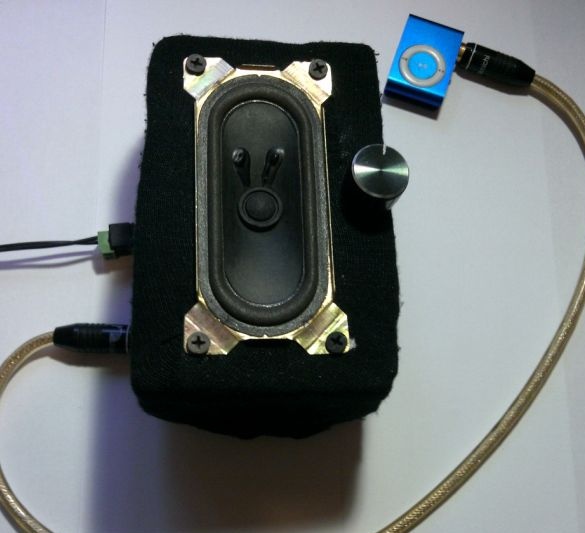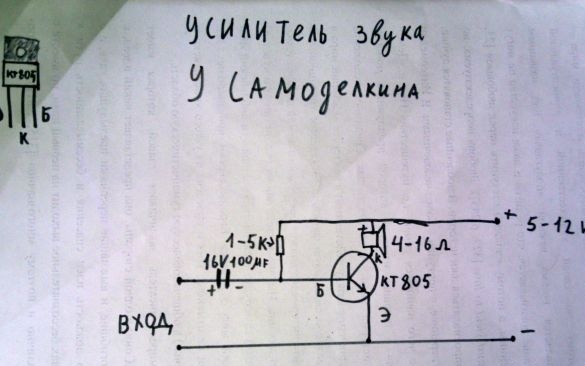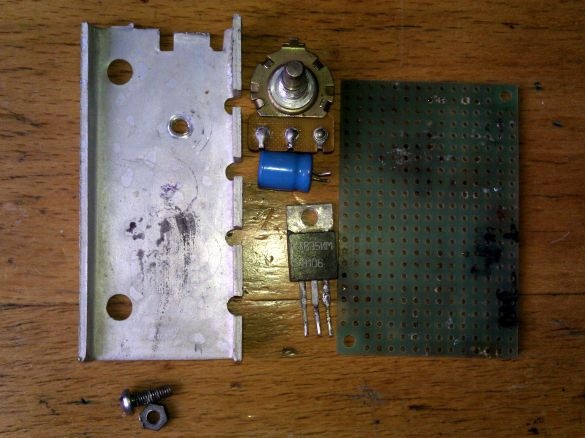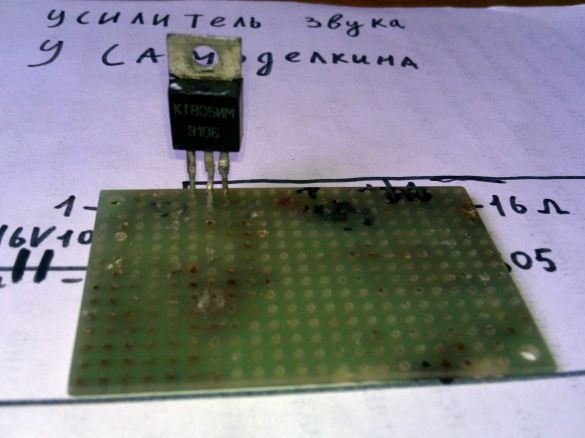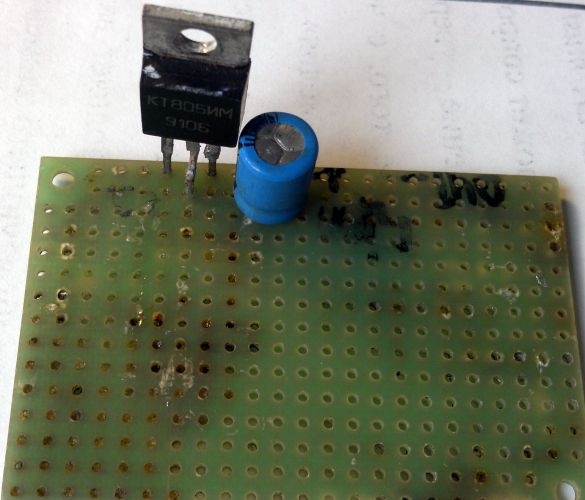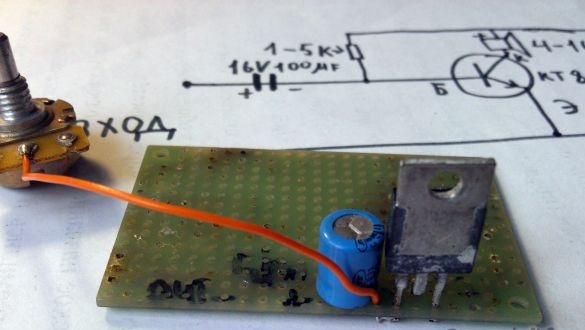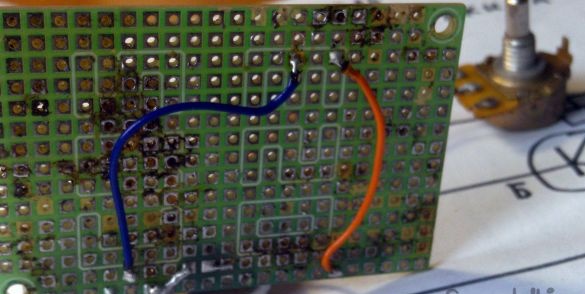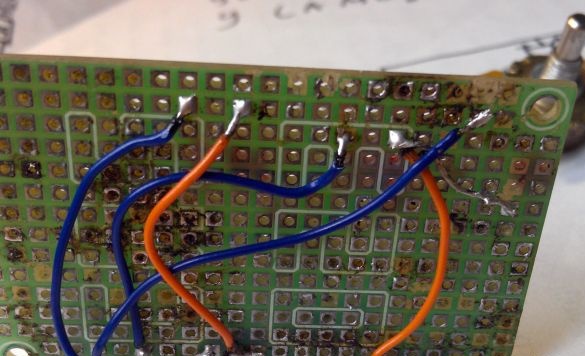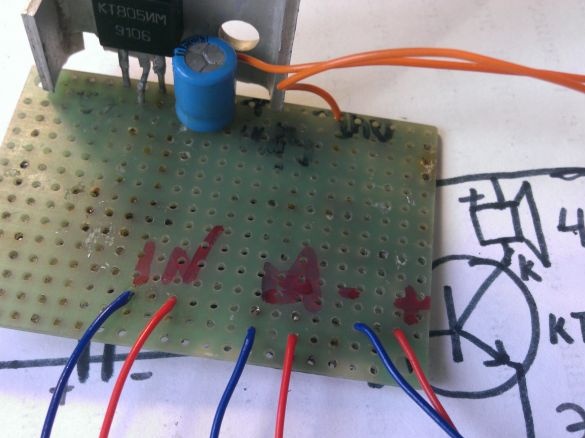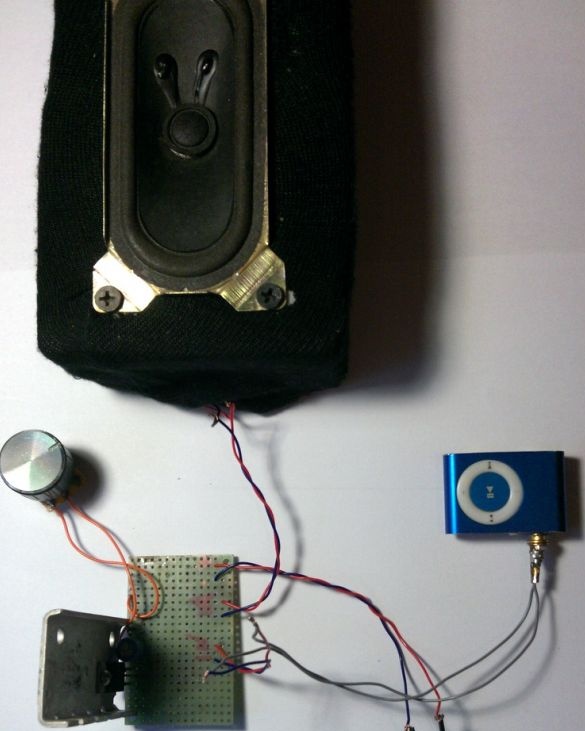To do this, we need the following components and tools:
1. n-p-n silicon transistor KT805 or its analogues. (this is the most powerful in the series)
2. Electrolytic capacitor with a capacity of 100 μF and a voltage of more than 16 volts
3. Variable resistor about 5kΩ
4. circuit board (optional - can be done by wall mounting)
5. radiator
6. wires
7. mini jack
8. 5-12 V DC power supply
9. soldering iron, rosin, solder.
(such stuff is chosen)
First of all, we install the components on the circuit board.
We solder the central terminal of the variable resistor and the negative terminal of the capacitor to the KT805 base.
The second output of the variable resistor is + power and + dynamics soldered to the board
The transistor collector (center pin) will be minus the speaker.
We connect the minus power and the negative wire of the input signal to the emitter. The positive wire is + capacitor.
For tests, it remains to solder 3 pairs of wires Input Output and Power (in the photo from left to right). We install the transistor on a radiator.
Getting started with tests and tuning. We assemble and connect all the components on the table, strictly observing the polarity! It is advisable to check the circuit for short circuits.
Our tuning resistor selects the correct mode of operation. In short, we coordinate the operation of the transistor with the resistance of the speaker.
Hurrah! Setup was successful! We cultivate and install everything in the housing.


